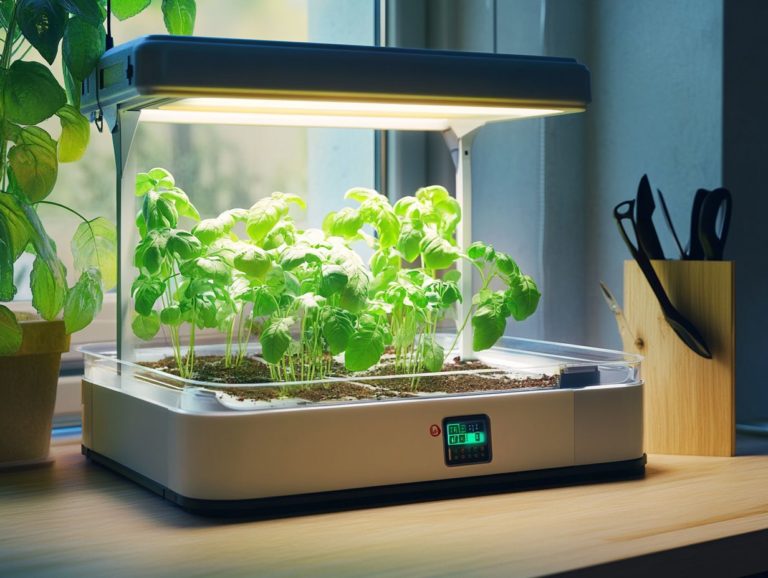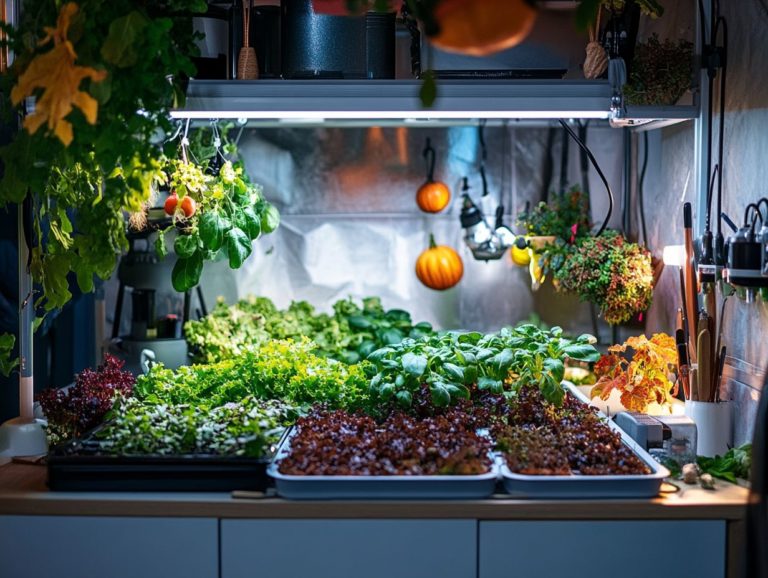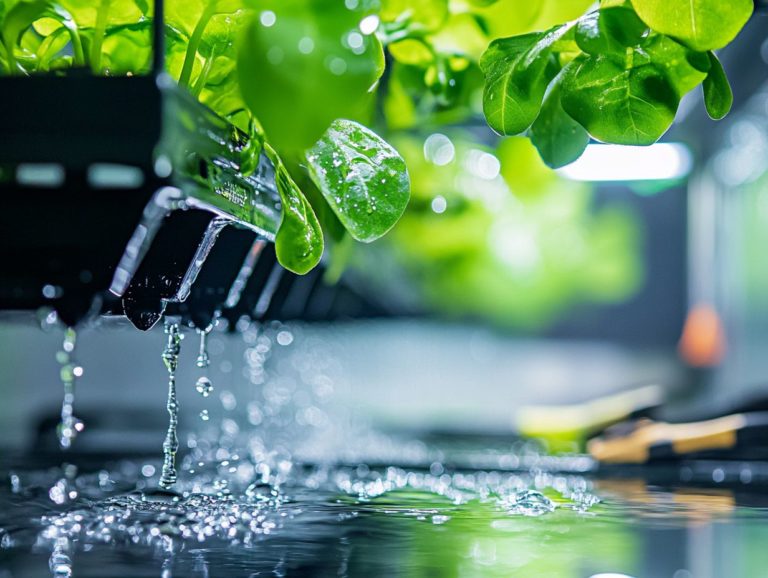Troubleshooting Hydroponic System Automation
Hydroponic system automation can truly elevate your growing experience, allowing you to cultivate plants with remarkable efficiency and effectiveness.
However, like any technology, it presents its own unique challenges, particularly seedling problems such as wilting and dead roots.
This article delves into the common issues that may arise with automation, such as system clogging caused by algae infestations and pest infestations, offering you valuable tips for troubleshooting, as well as an overview of the latest tools and technologies on the market.
You’ll also discover best practices designed to optimize your system for peak performance, including managing nutrient deficiencies that may lead to tip burn and root rot, and to prevent any automation hiccups.
Jump in now and unlock the incredible potential of your hydroponic setup and transform your growing journey!
Contents
- Key Takeaways:
- What is Hydroponic System Automation?
- Common Issues with Automation
- Automation Tools and Technology
- Optimizing Automation for Maximum Efficiency
- Preventing Automation Failures
- Frequently Asked Questions
- What is hydroponic system automation?
- Why is troubleshooting hydroponic system automation important?
- What are some common problems with hydroponic system automation and seedling issues?
- How can I troubleshoot a sensor that is not working properly in my hydroponic system and address potential root rot?
- What should I do if there is a power outage in my automated hydroponic system, and how can I manage plant growth?
- How can I prevent mechanical failures in my automated hydroponic system and ensure proper irrigation cycles?
Key Takeaways:
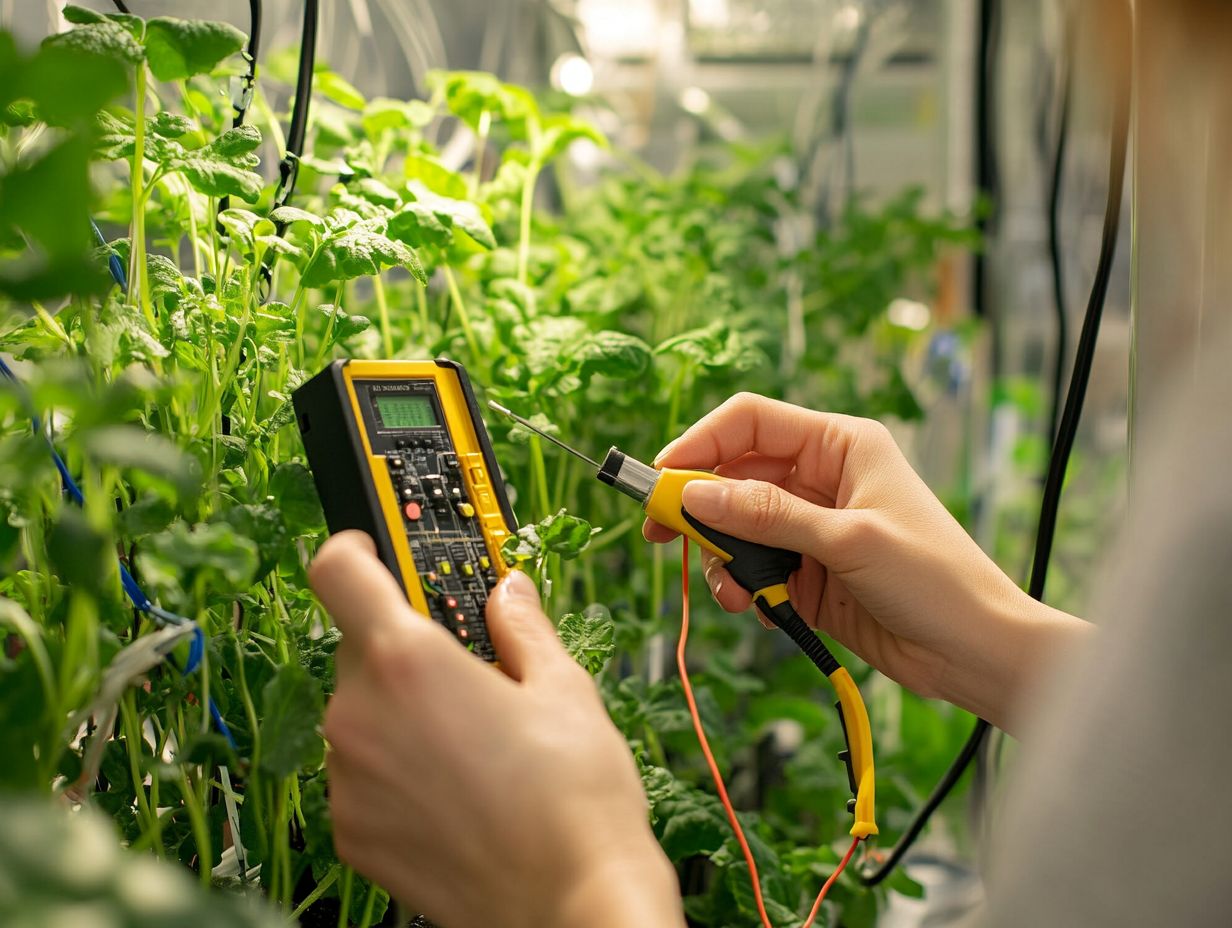
- Troubleshooting automation issues is crucial for successful hydroponic systems.
- Familiarize yourself with available automation tools and technologies.
- Regular maintenance and monitoring are key to preventing automation failures and optimizing efficiency in hydroponic systems.
What is Hydroponic System Automation?
Hydroponic system automation transforms the way you cultivate crops in a soil-free setting, harnessing technology to create ideal conditions for optimal plant growth. By carefully controlling factors like nutrient levels, pH, and water temperature, you can ensure your plants thrive.
This innovative technology provides substantial benefits in controlled environment agriculture. It gives you the power to efficiently manage your hydroponic systems. With automated irrigation cycles and smart systems powered by devices like Arduino and Blynk applications, you can elevate your farming experience to new heights.
Common Issues with Automation
Automation undoubtedly enhances the efficiency of hydroponic systems, but it’s essential to be aware of potential challenges that could jeopardize seedling health and overall crop yield. Issues like wilting, dead roots, and system clogging caused by algae growth and pest infestations can arise.
Recognizing these concerns is vital for maintaining optimal conditions and effectively addressing nutrient deficiencies that may result in symptoms like tip burn and root rot. By staying attuned to these factors, you can safeguard your crops and maximize their potential.
Identifying and Troubleshooting Problems
Identifying and troubleshooting problems in your hydroponic systems is essential for ensuring healthy seedlings and successful crop production, especially when dealing with issues like nutrient levels, water temperature, and pH measurement. Employing techniques such as biological pest management, which uses natural predators to control pests, can also help you tackle challenges and promote plant growth.
- To effectively pinpoint these common issues, start by monitoring your system’s pH levels using reliable test strips or digital meters. Any fluctuations outside the ideal range can lead to nutrient deficiencies or toxicities that you definitely want to avoid.
- Next, pay close attention to the water temperature; it should ideally stay between 65-75 F to create the best growth environment. If you notice symptoms like yellowing leaves or stunted growth, it s a clear sign that something s out of balance and needs your immediate attention.
- Utilizing technologies such as automated nutrient delivery systems can streamline your feeding process, and implementing biological pest management strategies during regular visual inspections will help you catch pest infestations before they become a bigger problem.
Follow these steps and watch your hydroponic systems thrive for healthier, more robust crops.
Automation Tools and Technology
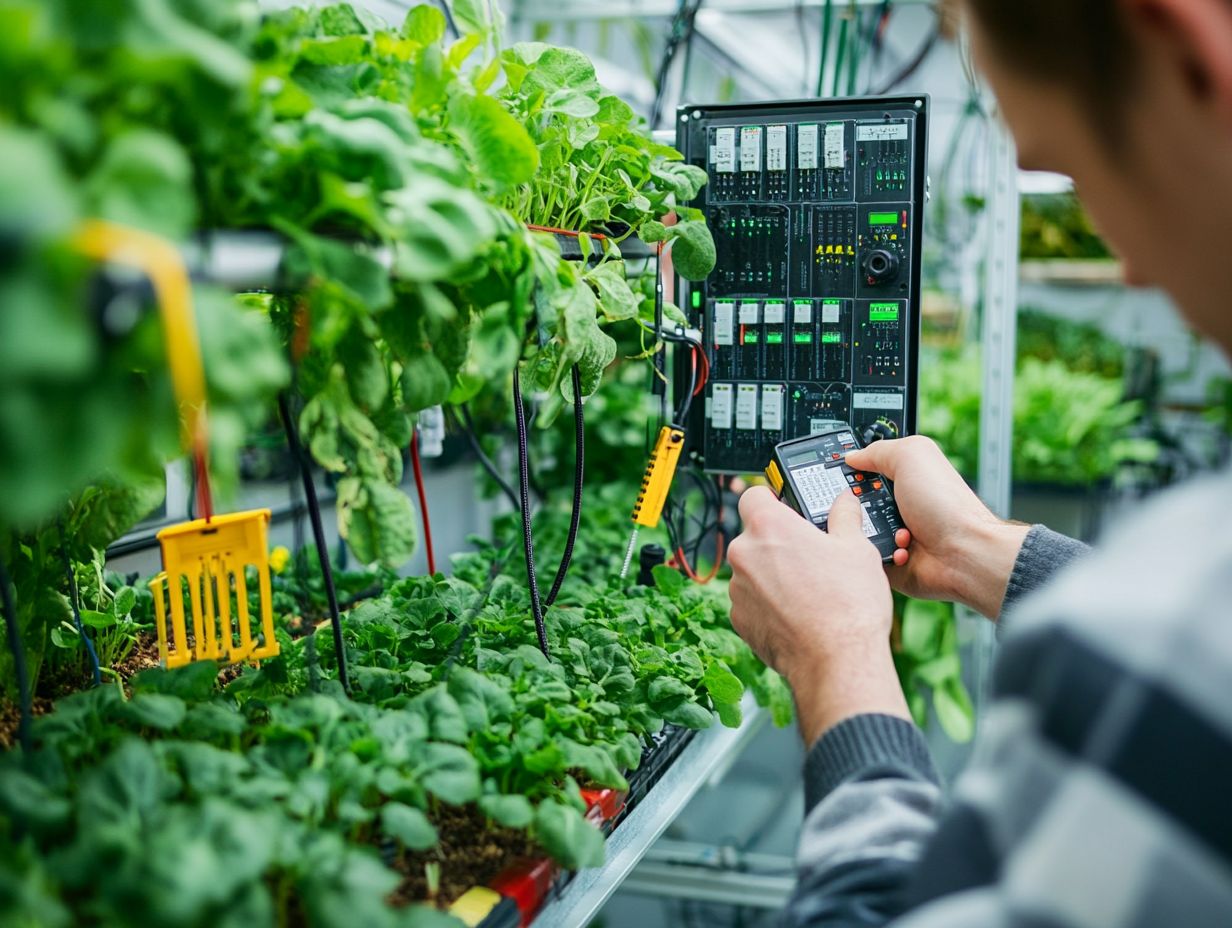
Automation tools and technology are essential for elevating hydroponic systems. By utilizing devices such as microcontrollers, peristaltic pumps, and an array of sensors including water level and pH sensors you can effectively monitor and control environmental conditions.
Integrating platforms like Arduino and Blynk applications allows you to conduct sensor testing and access real-time data, giving you the power to make better-informed decisions for your hydroponic endeavors.
Overview of Available Options
An overview of the automation options available in hydroponic setups reveals a remarkable array of technologies tailored to enhance your gardening experience. You ll find systems designed for precise nutrient composition, water temperature control, and the strategic use of LED strips and UV light to optimize plant growth. Gaining a solid understanding of these options can significantly elevate the efficiency of your hydroponic garden.
Moreover, you can take advantage of tools that automatically check pH and electrical conductivity levels, which maintain optimal conditions for nutrient uptake. Environmental controls that regulate humidity and airflow can also be invaluable. Understanding electrical issues in hydroponics is crucial, as automated fans and heaters work tirelessly to uphold ideal climate parameters, while irrigation schedules ensure your plants receive the perfect amount of water at just the right intervals, fostering robust root development.
Integrating these advanced technologies can boost crop yield and reduce labor costs, making your hydroponic systems more profitable and sustainable over time.
Optimizing Automation for Maximum Efficiency
To achieve the best results, it’s crucial to optimize automation in your hydroponic systems. By fine-tuning the irrigation cycle, maintaining precise nutrient levels, and controlling temperature tailored to your specific crop configurations, you set the stage for success.
This proactive strategy not only promotes sustainable farming practices but also significantly enhances overall plant development, especially in environments suited for growing plants in stacked layers.
Tips for Improving Performance
Implementing specific tips to enhance performance in automated hydroponic systems can significantly boost both efficiency and crop yield. Key actions include regular cleaning and sanitization, ongoing sensor testing, and leveraging advanced technology to monitor environmental conditions. These practices are essential for a healthier growing medium and promote better plant growth.
You must conduct regular maintenance checks to ensure that all components of your hydroponic system, such as pumps and nutrient delivery systems, are functioning at their best. Incorporating real-time data analytics allows you to assess plant health and nutrient uptake, enabling you to make swift adjustments as needed. By utilizing smart sensors, you can dramatically increase monitoring accuracy, providing precise control over critical parameters like pH, temperature, and humidity. For more detailed guidance, refer to troubleshooting pH levels in hydroponic gardens.
You can also enhance growth conditions by integrating machine learning algorithms that refine growth conditions based on historical performance data, enhancing the effectiveness of your automation system.
Preventing Automation Failures
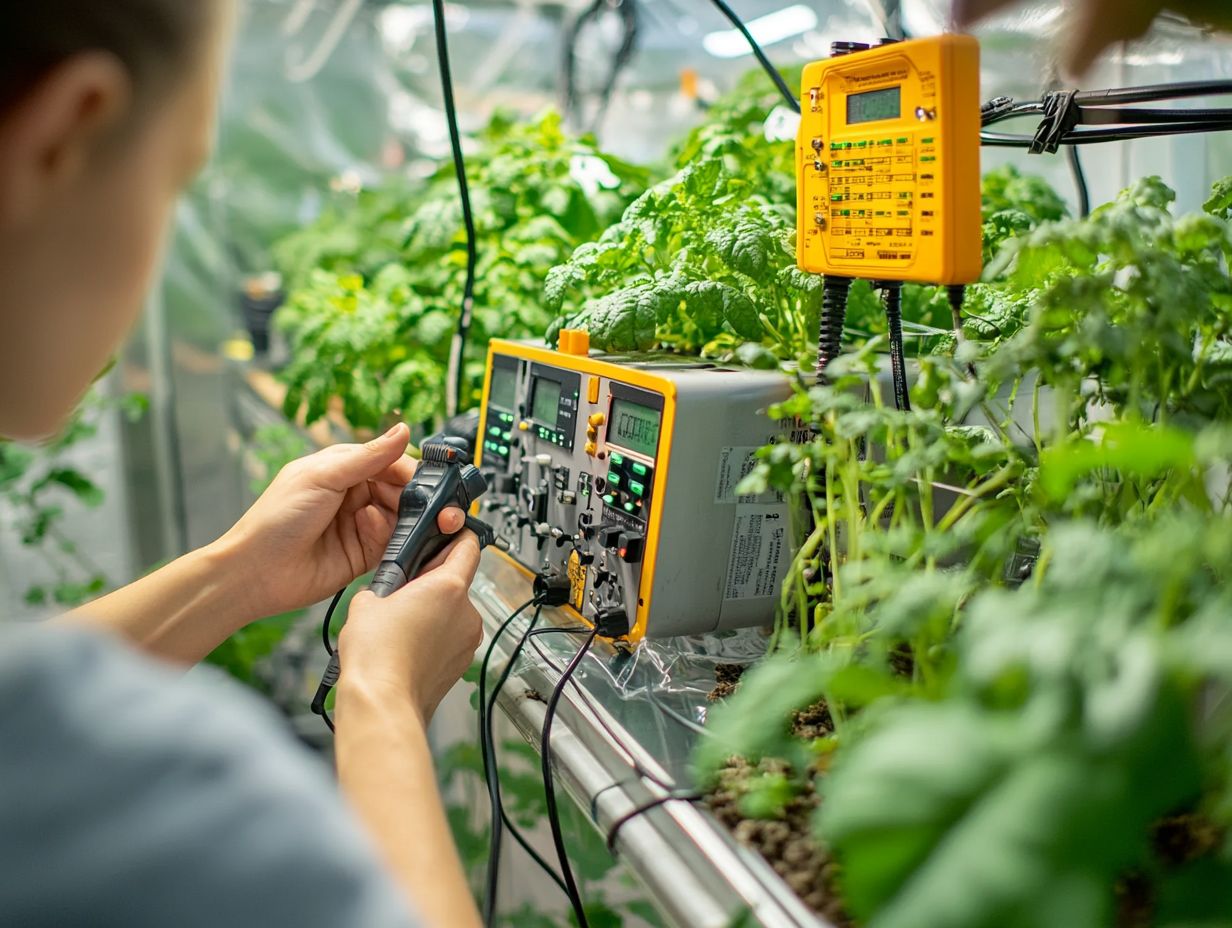
Preventing automation failures in hydroponic systems is crucial for preserving the health of your crops. You can achieve this through diligent maintenance, consistent monitoring of the irrigation cycle, and proactive measures to tackle common issues like root rot.
By establishing a routine for these essential tasks, including regular monitoring of your water tank, you can ensure sustainable and effective automated hydroponics, setting the stage for thriving plants and a fruitful harvest. Additionally, familiarizing yourself with troubleshooting light issues in hydroponic gardening will further enhance your success.
Best Practices for Maintenance and Monitoring
Adopting best practices for maintenance and monitoring in hydroponic systems is essential for ensuring the best results, especially regarding the irrigation cycle, nutrient composition, and water tank management. Implementing strategies like biological pest management can greatly enhance the overall health and productivity of your hydroponic garden.
To achieve these objectives, you should establish a routine schedule for checking water pH levels. This ensures they remain within the ideal range for plant growth. Utilize automated sensors for real-time monitoring to alert you to any fluctuations in nutrient levels, allowing for immediate adjustments. Regularly cleaning system components not only prevents clogs but also minimizes the risk of algae buildup. For more detailed guidance, refer to our resource on understanding hydroponic system maintenance.
Integrating AI-driven analytics can elevate your decision-making by predicting plant needs and optimizing resource usage. These technological advancements can transform a basic hydroponic setup into a highly efficient and productive environment, making your gardening experience not just easier but truly rewarding!
Frequently Asked Questions
What is hydroponic system automation?
Hydroponic system automation refers to using technology and devices to automate tasks in a hydroponic growing system, such as controlling temperature, lighting, and nutrient delivery.
Why is troubleshooting hydroponic system automation important?
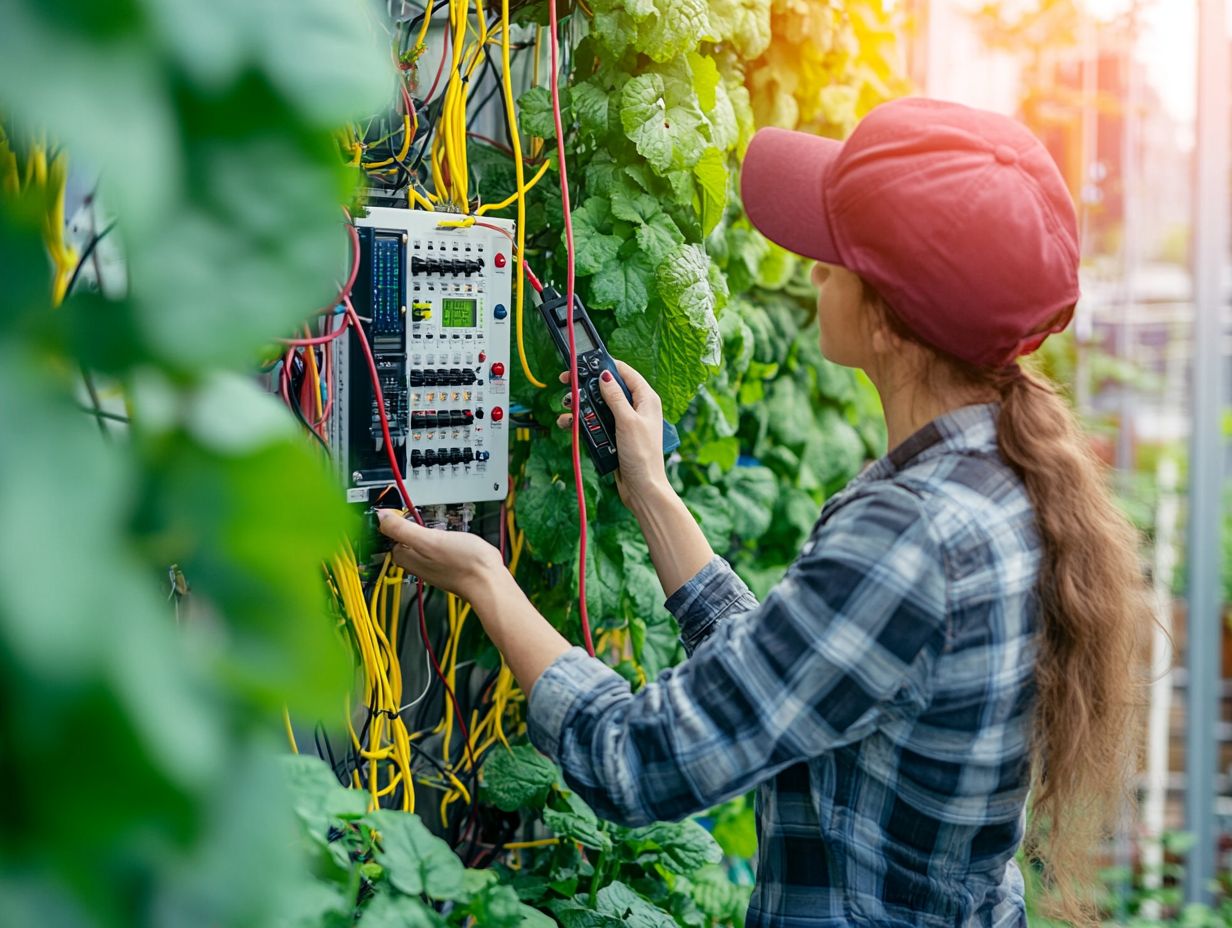
Troubleshooting hydroponic system automation allows growers to identify and fix issues in the automation process. This ensures that their plants receive the necessary care for optimal growth and yield.
What are some common problems with hydroponic system automation and seedling issues?
Some common problems include sensors that are not working properly, incorrect programming, power outages, and mechanical failures. Nutrient deficiencies and system clogging can also occur.
How can I troubleshoot a sensor that is not working properly in my hydroponic system and address potential root rot?
If a sensor in your hydroponic system isn’t functioning correctly, check for physical damage or loose connections. If this doesn t resolve the issue, try calibrating the sensor or replacing it as needed. You should also perform sensor testing to ensure accurate readings.
What should I do if there is a power outage in my automated hydroponic system, and how can I manage plant growth?
In the event of a power outage, make sure you have a backup power supply or generator ready to keep your hydroponic system running. If not, check on your plants for wilting or signs of dead roots, and manually provide any necessary care until power is restored.
How can I prevent mechanical failures in my automated hydroponic system and ensure proper irrigation cycles?
To prevent mechanical failures, regularly inspect and maintain all components of your automated hydroponic system, such as pumps, timers, and valves. Use high-quality equipment, like peristaltic pumps (pumps that move liquid through a tube), and replace any worn or damaged parts as needed. Optimize the irrigation cycle to promote healthy plant development. Start your maintenance routine today for thriving plants!


